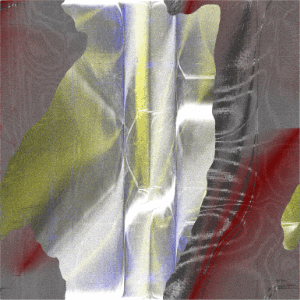::..:::…..:..::….:::::..:::..:::::::……:::…::.:::….::::..:..:::…::…….:::::
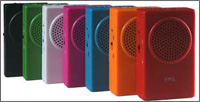 FM3 :: Buddha Machine (Staalplaat, CD)
FM3 :: Buddha Machine (Staalplaat, CD)
The Buddha Machine looks like a cheap transistor radio and, in a lot of ways, it’s even simpler. It has a volume dial, a toggle switch, a headphone jack, and a DC line in. Its speaker isn’t much bigger than a quarter and it has about three minutes worth of music on it. So why are the ambient experimentalists buying them by the handful? Why are they the coolest musical accessory of the season? Because — and it really is this simple — it makes meditatively evocative noises. Randomly.
Based on machines found in Buddhist temples that loop drones and chants endless, the Buddha Machine contains a tiny chip with nine loops on it. You can actually download the loops from the website. The ten loops range from five seconds to forty seconds in length and swirl across a variety of ambient landscapes (though, with their brevity, they aren’t much more than wisps of tone and hints of melody). Given a modern MP3 player — hell, you could slap ’em in a playlist and put it on your iPod and repeat for a century — you can make your own Buddha Machine.
But that completely fails to capture the magic that has been created by Christiaan Virant and Zhang Jian (who record as FM3 and who are responsible for this clever little box). It is meant to be heard from a crappy speaker, because ambience just isn’t about the notes, but it is also directly connected to the manner in which you listen, in how the sound is made, and in the environment in which you listen. The loops are built from traditional instruments: the Mongolian fiddle called the Matouqin is captured in a speaker-rattling tremolo, the stringed Koto whispers a tiny fragment of melody, and the Chinese mouth organ exhales a fragile tone that decays almost instantly. Virant and Jian craft tiny ghosts of sound that are flush with promise, with innocent tonality, and as they are melded and transformed by the limited technology of the hand-held Buddha Machine, the sound becomes phantasmal poetry.
A Buddha Machine costly roughly 1/10 the price of a robust MP3 player. It has no manual, no cables, no DRM or EULA, and certainly has no operating system requirements. A Buddha Machine is a defiant piece of retrograde technology that asks: what is the value of sound? What is worth listening to? The space between sounds, and the accidents that rise from random creativity. The Buddha Machine reminds us how to listen. Every elevator in the world should have their Musak channel replaced with a Buddha Machine. Buy one, take it with you in public, and turn in on in the thick of the crowds. Watch how the world changes. [Purchase]
::..:::…..:..::….:::::..:::..:::::::……:::…::.:::….::::..:..:::…::…….:::::
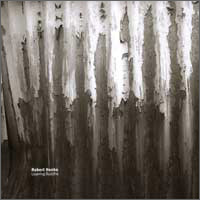 Robert Henke :: Layering Buddha (Imbalance Computer Music, CD)
Robert Henke :: Layering Buddha (Imbalance Computer Music, CD)
Half of you know Robert Henke as Monolake; the other half know him as a software developer for Abelton. With the Buddha Machine, Henke has taken the loops and fed them into his virtual machinery. Layering Buddha contains ten tracks which are excerpts from longer (er, infinitely long, even) pieces. While the loops themselves barely add up to three minutes altogether, Henke’s tracks swirl and morph and pulsate over five, six, and even eight minutes.
The first noticeable difference between Henke’s tracks and the original loops is the depth of field on Layering Buddha. Using very sensitive recording equipment, Henke captured frequency ranges that are normally unheard by the human ear. After he passed the recordings into his computer equipment, these frequencies became readily visible. As he manipulated the loops, building long waveforms and exploring the granularity of the peaks, he was able to create deep, rumbling drones as well as tease out chattering particulate that sounds like both rain and the buzz of insects on a hot summer day.
The ten tracks (numbered sequentially — “Layer 001,” “Layer 002” and so on) are meant to be played as a single audio track but, like the Buddha Machine, can easily be randomized as well, furthering the argument that the loops herein are simply a framework for ambience. The true “experience” lies in how randomness colors the listener’s aural landscape. Not so much “ambient trance” as “ambient chance.”
Henke (as Monolake) is no stranger to lengthy ambient excursions. His work is filled with an attentive ear towards microscopic changes that inject organic life into gorgeous tonal drift. He seems a natural choice to produce a record exploring the exploded sounds hidden within the simple loops of the Buddha Machine, but with Layering Buddha, he surpasses expectations. [Purchase]
::..:::…..:..::….:::::..:::..:::::::……:::…::.:::….::::..:..:::…::…….:::::
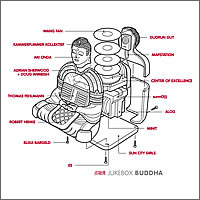 V/A :: Jukebox Buddha (Staubgold, CD)
V/A :: Jukebox Buddha (Staubgold, CD)
Taking advantage of the enthusiasm within the artistic community surrounding the tiny Buddha Machines, Staubgold commissions Jukebox Buddha, a wide-ranging collection of Buddha Machine loop remixes. Robert Henke is here, of course, with a shortened version of “Layer 002” from his Layering Buddha record. Many of the remixers don’t have the same obsessive fascination with the microscopic frequency changes of the loops and simply use the Buddha Machine sounds as inspiration or “ambience” in their tracks.
Wang Fan’s “Xuanzhuan De Tuoluonidi,” for example, has a female voice whispering Chinese over a cascading bed of shivering plasticene percussion. The Buddha Machine loop is background ambience, a hum like machinery in the next room. A growing cacophony of noise and compressed horns begins to threaten the waterfall of tinkling noises, and the ambience becomes an atmosphere of neo-noir amine over-stimulation. German nu-jazz group Kammerflimmer Kollektief create “Gammler, Zen + Hohe Berge,” a composition of scattered digital noises, slow violin, plucked guitar and delicate percussion. Aki Onda’s “The Buddha In New York” shrieks with guitar feedback, reverb, and an illicit cafeteria recording. The ambient sound of the tiny Buddha Machine is over-processed enough that it becomes a ringing loop of harmonics floating over the susurration of the patrons’ voices.
Adrian Sherwood and Doug Wimbish dub out the loops with “Karma-Cola,” adding the processed voice of a New Age guru who intones inspirational platitudes at random moments while a wealth of dub inflections slowly bleed through the mix. Thomas Fehlmann’s “Liquid Buddha” is reminiscent of Henke’s endless waves, though Fehlmann’s is drenched with watery reverb, rife with echo and delay. Minit’s “Winged Life” is either sourced from living insects or, like Henke, Minit has managed built loops and samples that recreate the buzzing, chittering sound of insects. Waves of static are layered beneath the organic chaff and, like the wind stirred at sunrise, the noise growing louder and more insistent as the track progresses. The Sun City Girls squash the Buddha Machine loops beneath gulping samples, watery tones and a straining guitar sound that has been processed into the warbling voice of an alien instrument.
Blixa Bargeld’s “Little Yellow” is genius. He’s recorded a noisy bird outside his window, chirping and singing as if it hasn’t a care in the world. In the background, so faint as to be almost indiscernible, you can hear the Buddha Machine on his desk. It’s a lovely bit of art intersecting nature and nicely comments on how man-made ambience still pales in comparison to the natural sounds around us. Stephen O’Malley offers a Sun O))) interpretation which, at the outset, seems like an incongruous pairing, but O’Malley eases up on the Thunder Echo Pedal in “BP//Simple.” Surprisingly, the distaff pairing of O’Malley’s sonorous guitar work and the Buddha Machine’s delicate ambience is a duet of some tenderness, an organic revolution and evolution of sound wherein the dark and the light play well together.
Jukebox Buddha, by it’s very nature, isn’t as sublimely evocative as Henke’s Layering Buddha. But the disparate directions taken by each artist make the compilation still an easy purchase. Recommended. [Purchase]
::..:::…..:..::….:::::..:::..:::::::……:::…::.:::….::::..:..:::…::…….:::::
Buddha Machine, Layering Buddha, and Jukebox Buddha are out now.






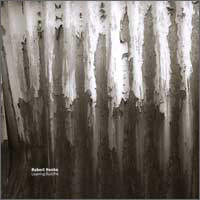
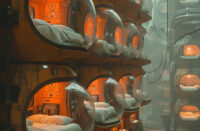

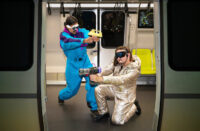

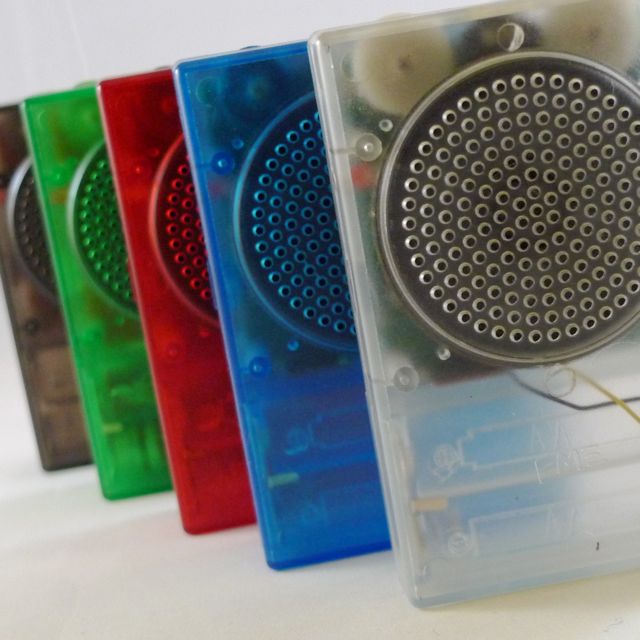

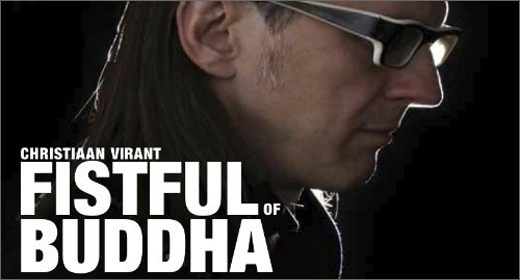
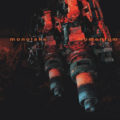
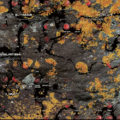



![Hasbeen :: Bunker Symphonies II (Clean Error) — [concise]](https://igloomag.com/wp/wp-content/uploads/2025/04/hasbeen-bunker-symphonies-ii_feat-75x75.jpg)
![Extrawelt :: AE-13 (Adepta Editions) — [concise]](https://igloomag.com/wp/wp-content/uploads/2025/04/extrawelt-ae-13_v_feat-75x75.jpg)
![Beyond the Black Hole :: Protonic Flux EP (Nebleena) — [concise]](https://igloomag.com/wp/wp-content/uploads/2025/04/beyond-the-black-hole-protonic-flux_feat-75x75.jpg)
![H. Ruine, Mikhail Kireev :: Imagined / Awakenings (Mestnost) — [concise]](https://igloomag.com/wp/wp-content/uploads/2025/04/h-ruine-mikhail-kireev-imagined-awakenings_feat2-75x75.jpg)


![Squaric :: 808 [Remixes] (Diffuse Reality) — [concise]](https://igloomag.com/wp/wp-content/uploads/2025/04/squaric-808-remixes_feat-75x75.jpg)
